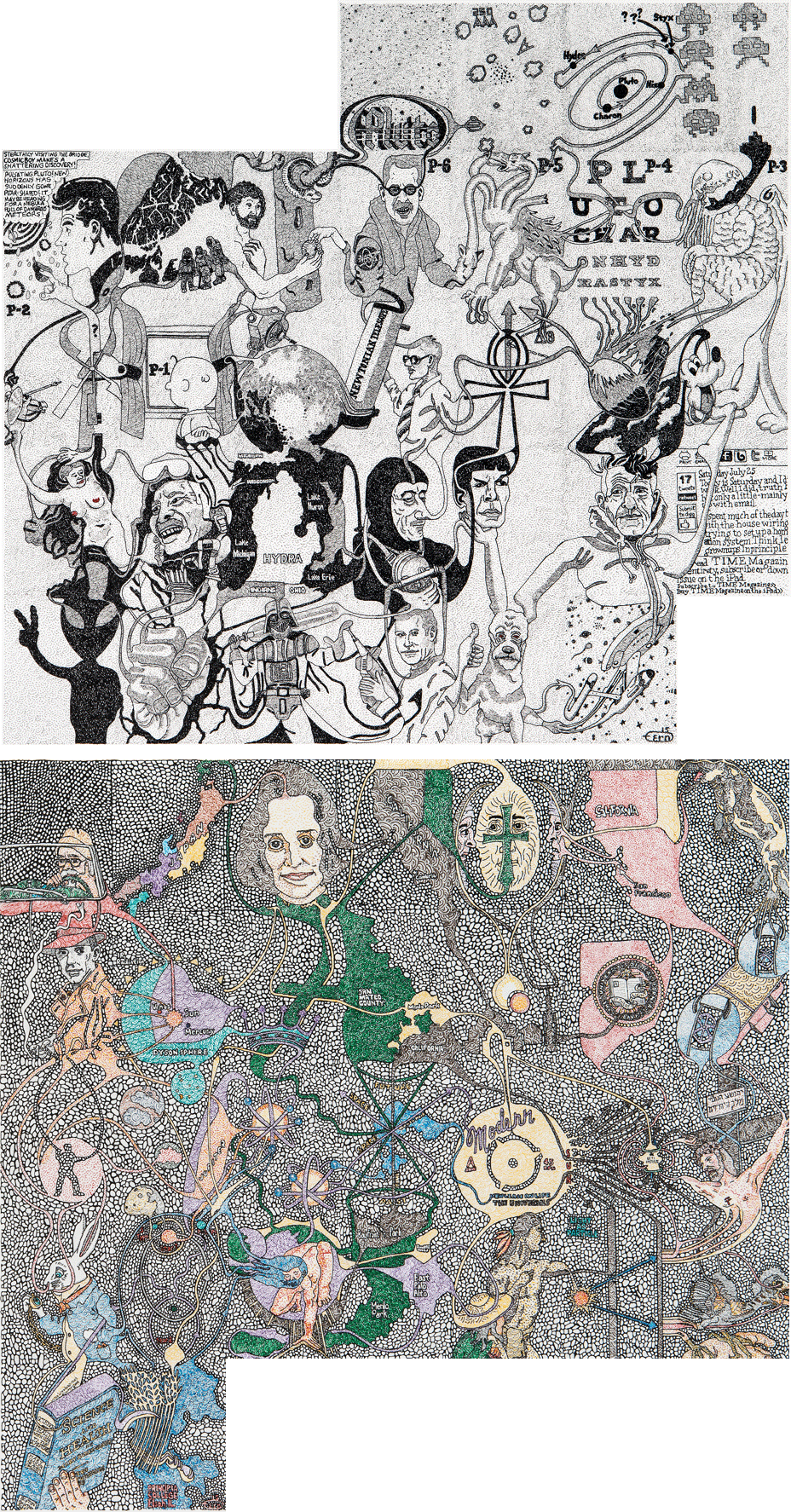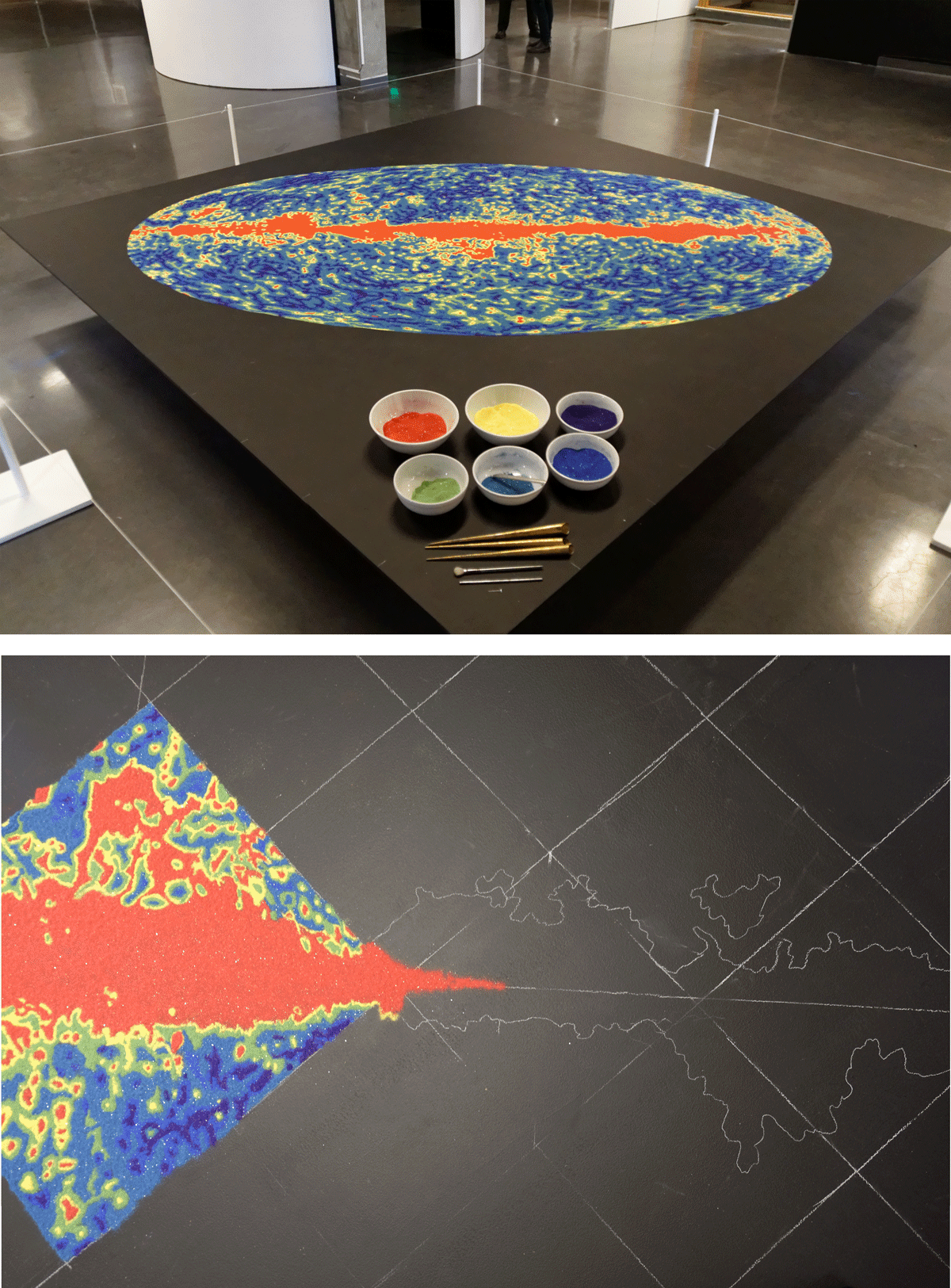If one thing animates scientists looking for life elsewhere in the universe, it is the power of cultural exchange—not just with alien species, but also, in more modest ways, among our own species. In 2010 Jill Tarter, then the director of the SETI Institute, met Charles Lindsay, a geologist turned artist, photographer, and musician who had just been awarded a Guggenheim Fellowship. She told him about the wide-ranging research happening at the institute and invited him to visit its observatory. He became “a beta test,” as he put it, for the institute’s artist-in residence program.
Some of the products of that program are now on display at New Museum Los Gatos in California through March 2017. The exhibition, called “Making Contact,” shows what happens when contemporary artists and leading scientists exchange worldviews or, rather, universeviews. “There’s not an artist I’ve met who doesn’t think the idea of an artist-in-residence program at SETI Institute is just about the coolest thing they’ve ever heard,” said Lindsay, who is now director of the residency program. “The scientists to a person have loved it.”
Art can convey a deeper understanding of science rather than surface-level information.
So far, half a dozen artists have come through the program, with another half dozen doing their residency now. Each residency lasts two years—a year to meet and talk to some of the institute’s nearly 70 scientists, a year to create a project inspired by the science.
Astrobiologist Laurance Doyle, who has studied everything from extrasolar-planet detection to quantum effects in astronomy to humpback whale songs, said the program has made it more clear to him how art can convey a deeper understanding of science rather than surface-level information. “I can see the value of art a lot more clearly than I did before,” he said, adding that art conveys the motivation behind the science and helps people grasp what’s intriguing and exciting about it. He has applied some of these lessons to his own presentations.
We’ve selected three projects from the exhibition that explore what’s in the universe beyond our horizons.

“Making History,” by artist and psychiatrist Martin Wilner, looks at first glance like pages torn from a wall calendar. But there are no dates, no days of the weeks, and no notes about appointments or holidays. The artwork is a stylized representation of the daily email correspondence Wilner had with 12 SETI Institute scientists, one per month. In each would-be calendar square, Wilner has drawn something tied to the scientist’s email from that day. Over the course of the month, the eclectic mix of miniatures coalesces into a coherent picture. On the other side of the page, Wilner reproduces the entire correspondence in word art. “I’m not trying to depict the totality of a person’s mind or their life, but to capture something meaningful about this shared experience,” he said.
“I can see the value of art a lot more clearly than I did before.”
Some of the scientists chose which month to participate based on what would happen in their projects at that time. Mark Showalter, a leader of the New Horizons mission to Pluto, picked July 2015, the month of the spacecraft’s Pluto flyby. “I said, well it’s gotta be July because that’s going to be the most fascinating and stressful and interesting and overwhelming month of my professional career,” he said. Looking back on the experience, he says the correspondence helped support him during the month, as if “this psychiatrist was keeping an eye on me and making sure I was okay.”

“Cosmic Microwave Mandala,” by artist and photographer Rachel Sussman, is a Tibetan-style sand mandala of the cosmic microwave background, an image of the early universe before the first stars and galaxies. Whereas most published images of the microwave background subtract out the foreground light of our Milky Way galaxy, she left it in as what she calls a “red gash.” “It made sense to me that we would have this human-centric view of it,” she said. She added: “We’re always trying to anthropomorphize these things, to form a connection.”
“The process of making the piece was incredibly challenging,” Sussman said. She had injured her back and pushed herself to work until she noticed herself getting sloppy. “I kept thinking, well, as it should be, because the universe wasn’t created in a day,” she said. At the end of the exhibition, the mandala will be destroyed, as is traditional for Buddhist mandalas. Sussman hopes to send some of the sand home with museum visitors.

“Somniuim” is an immersive piece by roboticists and multimedia artists Danny Bazo, Karl Yerkes, and Marko Peljhan. It reinterprets data from the Kepler mission, a space telescope that looks for exoplanets orbiting neighboring stars. (The piece is named for a science-fiction story written by the telescope’s namesake, astronomer Johannes Kepler.) The telescope records stellar brightness, looking for patterns that betray otherwise unseen companions, and the trio converted this brightness data to sound. They used raw light data, rather than the cleaned-up data, in order to capture the human quirks that shaped the data. “There’s a lot of stories in the data about when the telescope was turned on, when a particular piece failed, what was happening in a particular moment in time,” Bazo said. Yerkes added: “It also turned out to be a good aesthetic choice. It makes for a lot richer soundscape; there’s enough noise that it sounds, sometimes, like ocean waves.”
To create a visual piece to the installation, the trio etched a large glass disc with the first photograph Kepler took. The etching process used a laser—“literally using light as a hammer,” Bazo explained. “Like snowflakes, every single crater blast is unique. Under the microscope you can see this.” A microscope is programmed to wander across the disc like a lost record-player needle. As it travels, a screen displays its view, and speakers play matching Kepler data in acoustic form. “It kind of turns into a space orchestra,” Bazo said, conveying “this idea that we’re searching—almost like the cosmic radio dial.”

























